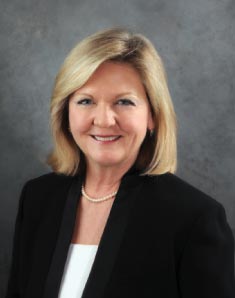 A couple of hours south of Nashville lies a place inhabited by manned rockets and moon rocks that gives witness to America’s stellar past and beckons young and old to come and contribute to its future. It is the U.S. Space and Rocket Center in Huntsville, Alabama’s No.1 tourist attraction, and Deborah Barnhart is leading it to new frontiers.
A couple of hours south of Nashville lies a place inhabited by manned rockets and moon rocks that gives witness to America’s stellar past and beckons young and old to come and contribute to its future. It is the U.S. Space and Rocket Center in Huntsville, Alabama’s No.1 tourist attraction, and Deborah Barnhart is leading it to new frontiers.
The center named Barnhart director in January. Having grown up in Huntsville (her father worked at the then-fledgling Marshall Space Flight Center), Barnhart graduated from the University of Alabama-Huntsville before expanding her horizons with the U.S. Navy. She was one of the first 10 women qualified to fight on and drive Navy vessels. She rose to the rank of captain and was assigned for a time to the U.S. Naval Academy. She directed Space Camp at the center for four years and worked in the aerospace and defense sectors after that.
With two children under the age of 6, she decided to pursue a doctorate and looked at area schools. “Then I talked to Dr. William Lucas (MS’50, PhD’52), who was head of the Marshall Space Flight Center. He said, ‘Deborah, if you’re going to get your doctorate, go get it from some place you’ll respect for the rest of your life. Why don’t you go to Vanderbilt?’”
If we’re not getting the hook set [for math and science] when they’re in grade school, sometimes we miss them.
—Deborah Barnhart
At Peabody she found the educational experience to be different from those she received in public institutions. “I already had a master’s from the University of Maryland. I was kind of an oddball. I would come in with projects that were interesting to me in my area at the Space and Rocket Center and in aerospace and defense, and they totally supported my interests. [They] encouraged me and showed me how to use the tools to do the work that I wanted to accomplish in my professional career.”
She now has a vision to take the Space and Rocket Center from its robust, historical artifact base and add a hands-on science component. “I want to start offering something for the 2- to 10-year-old child in a hands-on, three-dimensional way,” Barnhart says. “That’s where the interest in math and science starts. If we’re not getting the hook set when they’re in grade school, sometimes we miss them. We’re going to elevate this place to a regional science center and shift the focus from strictly space and rocket more to science engineering and STEM education.
“We are NASA’s public information extension to educators,” she says. “We have a separate building here on campus totally dedicated to supporting teachers in space science education. All my pals and alumni and friends from Peabody are welcome to come use us as a resource through the NASA educator research facility.”